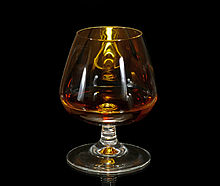**History and Production:**
– Brandy’s origins are linked to the development of distillation.
– French brandy played a significant role in the cross-Atlantic triangle trade.
– Distillation of wine initially served for preservation and tax reduction.
– Brandy production methods have evolved over time, varying regionally.
– Base wine for brandy differs from regular table wines.
– Brandy is distilled in two phases to obtain the final product.
– Distillation enhances alcohol content and alters aroma components.
– Pot stills and column stills are commonly used for brandy production.
– Aging process involves maturing unaged brandy in oak barrels.
– Solera system is used for aging some brandies.
– Brandies are diluted with water before bottling, and some have additives to mimic barrel aging.
**Varieties and Brands:**
– American grape brandy production is mainly concentrated in California.
– Popular brands include Christian Brothers, E&J Gallo, Korbel, and Paul Masson.
– France produces renowned brandies like Armagnac and Cognac, with brands such as Darroze, Martell, and Hennessy.
– Other brandy varieties include Cyprus brandy, Greek brandy, and Kanyak from Turkey.
– Ararat brandy from Armenia offers bottles aged from 3 to 20 years.
**Aging Designations and Labelling:**
– Brandy has a traditional age grading system with designations like VS, VSOP, and XO.
– Labelling of brandy grades is unregulated outside of Cognac and Armagnac.
– Specific indicators are usually found on the label near the brand name.
– Brandy de Jerez from Spain holds a protected designation of origin.
– Geographical indications like Weinbrand in the EU and Russian brandy follow classic cognac technology.
**Consumption and Modern Uses:**
– Brandy is traditionally served at room temperature and is used in popular cocktails like Brandy Sour and Sidecar.
– It is a key ingredient in cocktails like Brandy Alexander and is used in traditional English Christmas cooking.
– Brandy is also used in culinary applications for flavor enhancement.
– Modern uses include craft distilleries producing artisanal brandies, brandy tasting events gaining popularity, and a growing interest in aged and vintage brandies.
**Historic Medical Uses and Notable Mentions:**
– Brandy was historically used for its alleged stimulating qualities and by European explorers in tropical Africa to cope with fever, depression, and stress.
– Views on brandy’s medical uses fell out of favor in the late 19th and early 20th centuries.
– Notable mentions include brands favored by historical figures like Churchill, Agatha Christie, and Frank Sinatra.
– Specific regulatory requirements for labeling brandy exist in different jurisdictions.
Brandy is a liquor produced by distilling wine. Brandy generally contains 35–60% alcohol by volume (70–120 US proof) and is typically consumed as an after-dinner digestif. Some brandies are aged in wooden casks. Others are coloured with caramel colouring to imitate the effect of ageing, and some are produced using a combination of ageing and colouring. Varieties of wine brandy can be found across the winemaking world. Among the most renowned are Cognac and Armagnac from south-western France.
 Cognac brandy in a typical snifter | |
| Type | Distilled beverage |
|---|---|
| Country of origin | France |
| Introduced | 15th century |
| Alcohol by volume | 35–60% |
| Proof (US) | 70°–120° |
| Ingredients | wine |
| Variants | pomace brandy, fruit brandy |
| Related products | Armagnac, Cognac |
In a broader sense, the term brandy also denotes liquors obtained from the distillation of pomace (yielding pomace brandy), or mash or wine of any other fruit (fruit brandy). These products are also called eau de vie (literally "water of life" in French).
